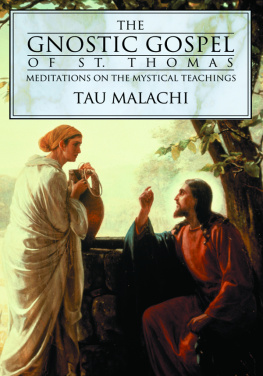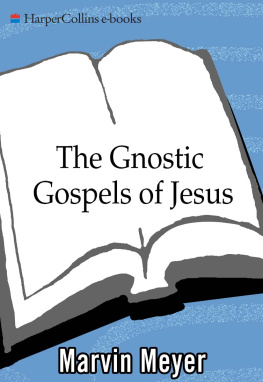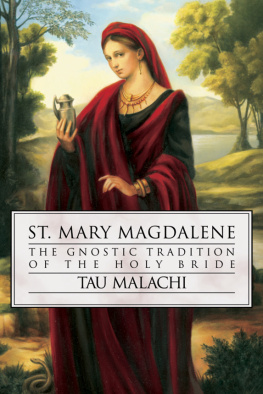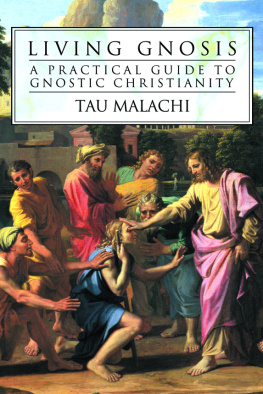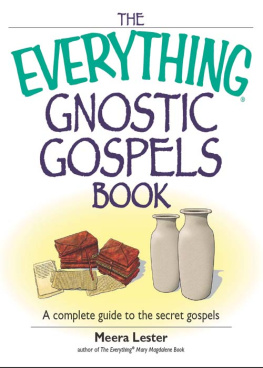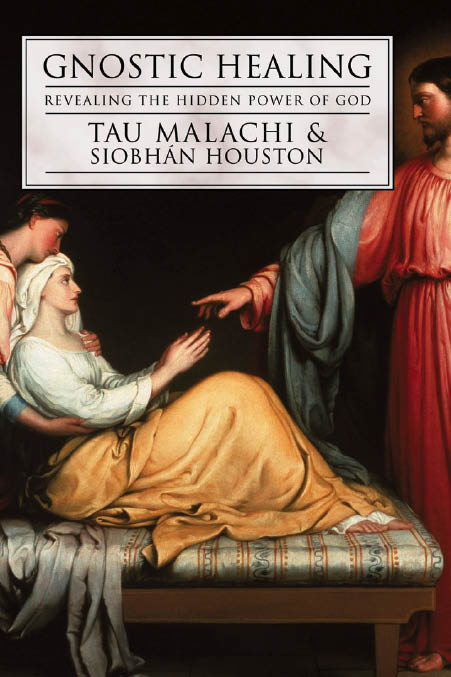
About Tau Malachi
Tau Malachi is a modern mystic and visionary who has been a traveler of the spiritual path since he was a boy, when he met his spiritual teachers, Tau Elijah and Mother Sarah, who initiated him in the Sophian Gnostic traditiona living lineage of Gnostic Christianity and Kabbalah that honors the Divine and Sacred Feminine. Today he is the presiding lineage-holder of the tradition, serving as an elder and tau, as well as an Independent Catholic bishop, holding both traditional and esoteric lines of apostolic succession.
Malachi has become a well-known teacher and writer on the subjects of mystical and gnostic Christianity and Christian Kabbalah, and is the author of four books, as well as extensive writings published on the Internet. He is the founder of both the Sophian Fellowship, a Gnostic community based in Grass Valley, California, and of Ecclesia Pistis Sophia, an international Gnostic Christian church based in Austin, Texas.
Tau Malachis books include The Gnostic Gospel of St. Thomas ; Living Gnosis ; Gnosis of the Cosmic Christ ; and St. Mary Magdalene , all published by Llewellyn Worldwide.
About Siobhn Houston
Dr. Siobhn Houston is the author of Invoking Mary Magdalene: Accessing the Wisdom of the Divine Feminine (Sounds True, 2006) and Priests, Gnostics, and Magicians: European Roots of Esoteric Independent Catholicism (Apocryphile Press, 2009). Her writings have appeared in many periodicals, including GNOSIS: A Journal of the Western Inner Traditions , Parabola , Quest Magazine, Intuition Magazine , and Theosophical History, as well as numerous anthologies.
A native of the California coast, she graduated summa cum laude with an honors BA in religious studies from California State University, Chico. She also holds a masters degree from Harvard Divinity School and a doctorate from the Graduate Theological Foundation.
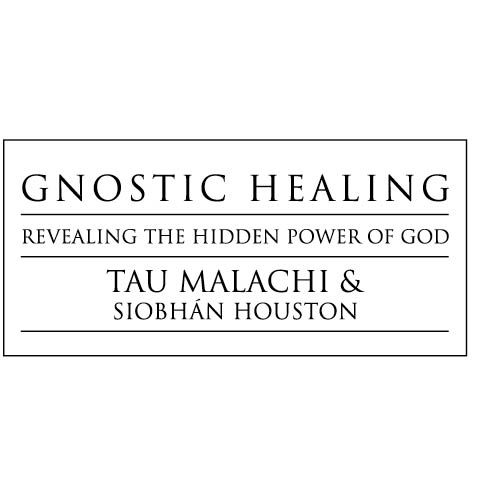

Llewellyn Publications
Woodbury, Minnesota
Gnostic Healing: Revealing the Hidden Power of God 2010 by Tau Malachi & Siobhn Houston.
All rights reserved. No part of this book may be used or reproduced in any matter whatsoever, including Internet usage, without written permission from Llewellyn Publications, except in the form of brief quotations embodied in critical articles and reviews.
As the purchaser of this e-book, you are granted the non-exclusive, non-transferable right to access and read the text of this ebook on screen. The text may not be otherwise reproduced, transmitted, downloaded, or recorded on any other storage device in any form or by any means.
Any unauthorized usage of the text without express written permission of the publisher is a violation of the authors copyright and is illegal and punishable by law.
First e-book edition 2010
E-book ISBN: 9780738723082
Based on book design by Connie Hill
Cover art 2009 by Agnew & Sons, London/Bridgeman Art Library,
London/SuperStock
Cover design by Ellen Dahl
Editing by Connie Hill
Llewellyn Publications is an imprint of Llewellyn Worldwide Ltd.
Llewellyn Publications does not participate in, endorse, or have any authority or responsibility concerning private business arrangements between our authors and the public.
Any Internet references contained in this work are current at publication time, but the publisher cannot guarantee that a specific reference will continue or be maintained. Please refer to the publishers website for links to current author websites.
Llewellyn Publications
Llewellyn Worldwide Ltd.
2143 Wooddale Drive
Woodbury, MN 55125
www.llewellyn.com
Manufactured in the United States of America
Id like to dedicate this book to the companions of Sophia Fellowship, without whose friendship and support this project would not have come into being.
I am truly blessed to have an awesome circle of friendsthank you!
Tau Malachi
I would like to dedicate this book to my always-wise and ever-patient spiritual director of the last six years, Mary Griffith, and to Mandianne Berg, and to my sisters in Alchemy of the Rose Colleen Corbo and Cynthia Reber.
S.J.H.
CONTENTS
We would like to acknowledge Llewellyn Publications and its entire staff who make the publication of books on the Sophian Gnostic tradition possible; in our eyes they are partners in the Great Work and we deeply appreciate their help and support in the Work.
Thanks to Llewellyn Worldwide, many of us involved in alternative and mystical forms of spirituality are given a voice we otherwise would not havethey provide an incredible service to spirituality in modern times and are amazing advocates of spiritual and religious freedom.
To everyone at Llewellyn, thank you!
________
While doing research on contemporary Gnostic Christianity for my doctoral degree a few years ago, I came across the writings of Tau Malachi, which impressed me with their wisdom and clarity, and seemed to emanate from an unusual depth of experience. Having had mixed experiences personally and professionally with spiritual teachers in the past, I wanted to meet Tau Malachi in person. In October 2005, during my next visit to California, we met for coffee and then dinner; four hours later I had a new friend as well as a mentor. Tau Malachis unpretentious manner and his down-to-earth sense of humor especially struck me, in addition to his great store of knowledge in spiritual matters.
One of the elements of the Sophian Gnosticism that initially attracted me was its strong grounding in the Jewish tradition. As a Christian who was born into an intercultural family (Jewish mother, Scots-Irish father) and raised primarily in a Jewish milieu, many of the kabbalistic concepts that undergird the Sophian tradition were familiar to me. Indeed, the core texts of the Sophian tradition, in addition to the canonical Bible and some of the early Christian apocrypha (such as the Pistis Sophia) , are medieval Jewish mystical texts such as the Sefer ha-Bahir (the Book of Brilliance) and the Sefer ha-Zohar (the Book of Splendor).
Make no mistake, howeverthe Sophian Gnostic tradition is thoroughly Christian. The tradition of Christian Kabbalah extends back hundreds of years, at least to the Renaissance. Christian scholars, including Giovanni Pico della Mirandola (14631494), Johann Reuchlin (14551522), and Athanasius Kircher (16021680) studied the Jewish Kabbalah for a variety of reasons. Some of these Renaissance thinkers wished to promote a universal faith and used the wisdom they discovered in their Judaic tradition to buoy their ideas; others wanted to show that Judaisms mystical teachings would verify Christianitys doctrines. Since the Renaissance, the study of Christian Kabbalah in Europe has continued, surfacing in the Rosicrucian impulse of the 1700s and the occult revival of the late 1890s. According to the tradition that Tau Malachi carries, the inner teachings of Yeshua (Jesus) rest on the mystical teachings of Judaism; these mysteries have come down through the ages in the form of a Christian Kabbalah (the Hebrew word kabbalah simply means, that which is received).
The Sophian lineage has been, up until the last few years, a wholly oral tradition, which probably had its origins around the seventeenth century in Europe as part of the Rosicrucian Enlightenment. In its early days, members of the Sophian lineage were outwardly integrated into the life of the church and would meet secretly in private homes to study the Christian Kabbalah. Since they had little or no access to the primary texts of the early Christian Gnostics, they relied on the available Jewish texts. This tradition is most probably one of many Gnostic lineages that have survived under the historical radar by leaving no written traces either of their teachings or their membership. To do otherwise would have been to invite unspeakable persecution by the outer church, such as the fate suffered by the medieval Cathars, a Gnostic Christian movement that was violently put down by the Roman Catholic church in alliance with the reigning political forces of the time.
Next page

